Tutima Grand Flieger Classic Chronograph – The German Pilot’s Watch Modernized
Tutima’s historic German Flieger chronograph updated with contemporary specs.
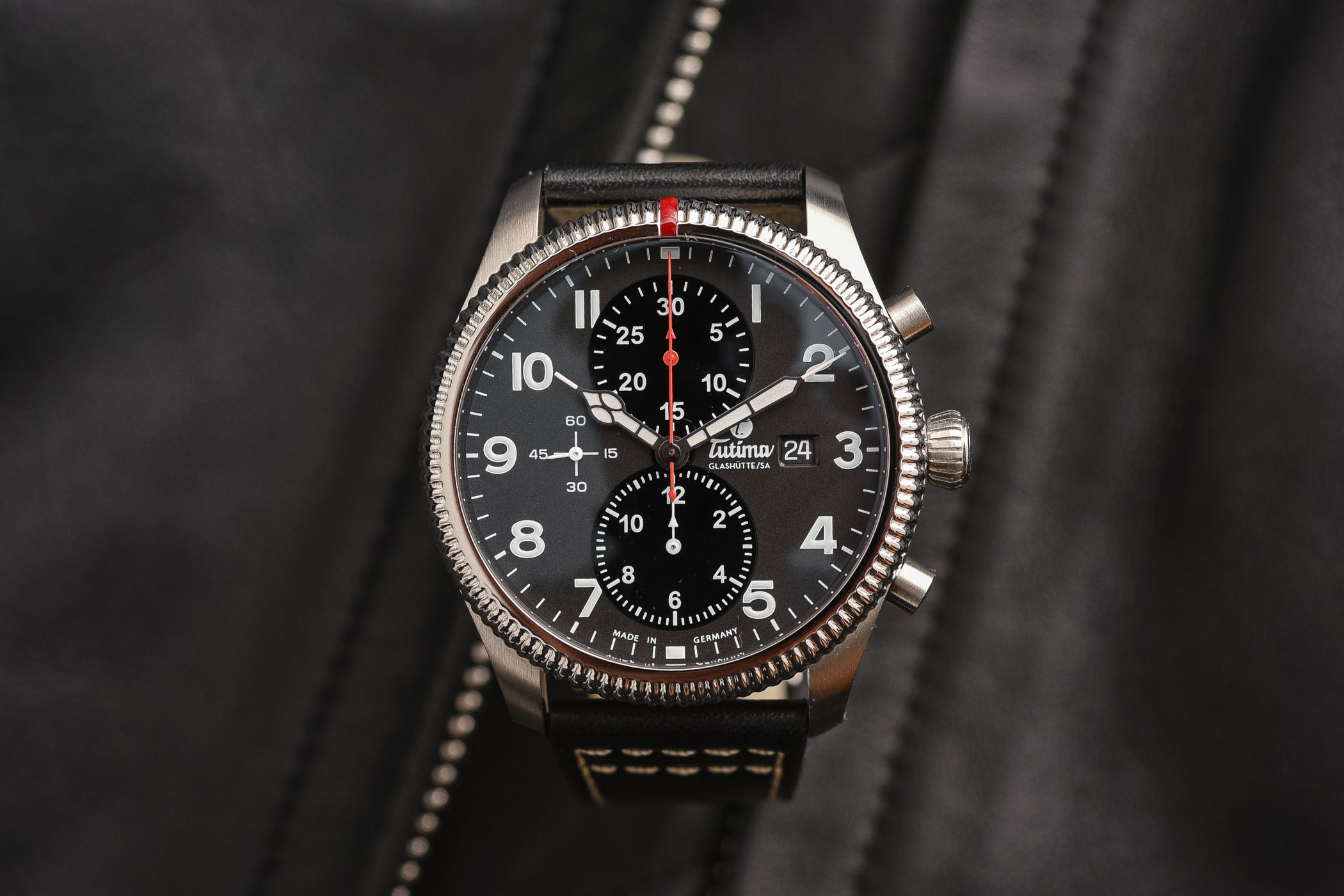
Emphasising key traits of Tutima’s historic pilot chronograph of 1941, the 43mm Grand Flieger Classic Chronograph is a solidly built, top quality companion for life’s everyday missions. The first flyback chronograph to be produced in Glashütte, Germany for the Luftwaffe, the distinctive credentials of the original Tutima Flieger Chronograph – like the coin-edged rotating bezel, the unique red reference marker on the bezel, the black dial and luminous cathedral-style hands – are faithfully recreated for those who enjoy the aesthetics of WWII pilot’s chronographs but appreciate modern engines.
Our fascination with pilot watches
Apart from all its horrendous consequences, war has always been a catalyst for technological advancement. Objects that populate our civilian lives, things like microwaves, Nescafé, duct tape, disposable razors and the groundwork for the internet, were all conceived during times of war. Although wristwatches had made their debut on women’s wrists, it was the context of war that finally elevated the wristwatch as a real accessory worn by real men. When it comes to wristwatches that were actually designed as tools for men in wartime situations, the cachet soars even higher. This probably goes a long way in explaining the undying popularity of aviator’s watches (Flieger in German).

The honour of the first wristwatch conceived expressly for a pilot goes to Louis Cartier. In 1904 Cartier responded to a request by his friend, the pioneering Brazilian aviator A. Santos-Dumont, who had complained about the impracticality of extricating a pocket watch while piloting his aircraft. He needed something that he could glance at without having to take his hands off the controls. A handsome wristwatch for recreational daredevils – with none of the attributes we associate with wartime pilot’s watches – the Cartier Santos ushered in the age of the pilot watch. For a truly encyclopaedic review of the history and evolution of pilot’s watches, please consult our 5-part series here.
German Flieger watches
The production of dedicated pilot watches really took off during the inter-war period. By World War II serial production of pilot watches was underway leading to the birth of the strapping anti-magnetic B-Urhen watches for Germany’s Luftwaffe. Produced by four manufacturers in Germany (A. Lange & Söhne, Wempe, Laco and Stowa) and one in Switzerland (IWC), the B-Urh would become the prototype of the pilot’s navigation watch.
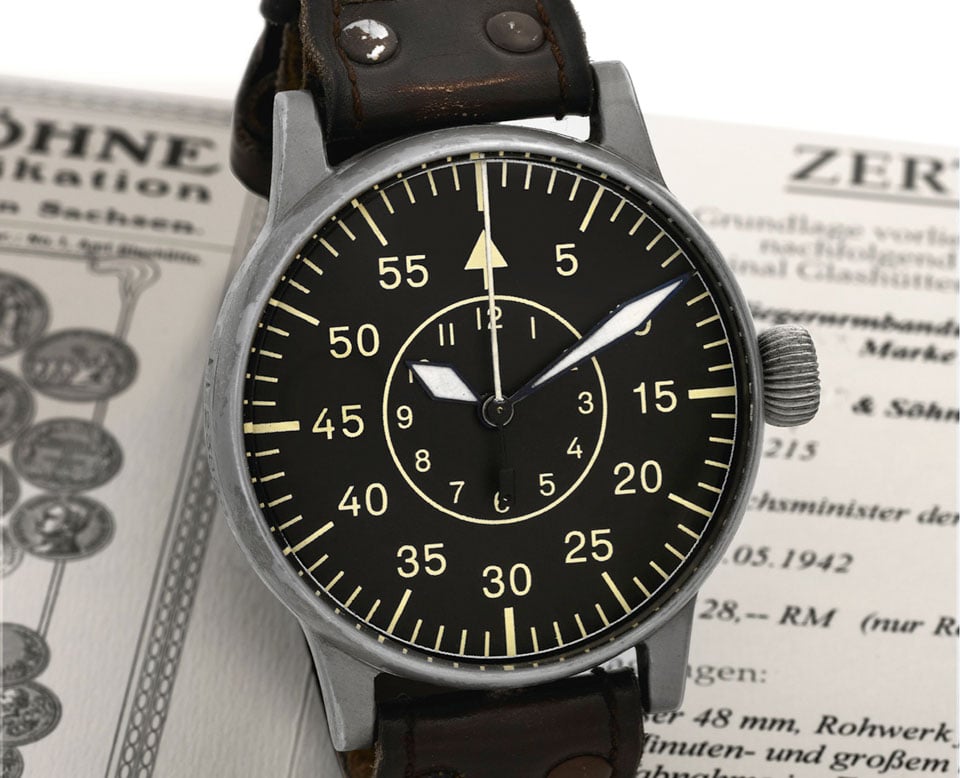
But the B-Urh was not the only contender for wartime commissions and Tutima’s Flieger Chronograph of 1941 emerged with a distinctive aesthetic and function. Located in Glashütte, Tutima (originally two separate brands UROFA-UFAG) hedged its bets on the rising popularity of the wristwatch.
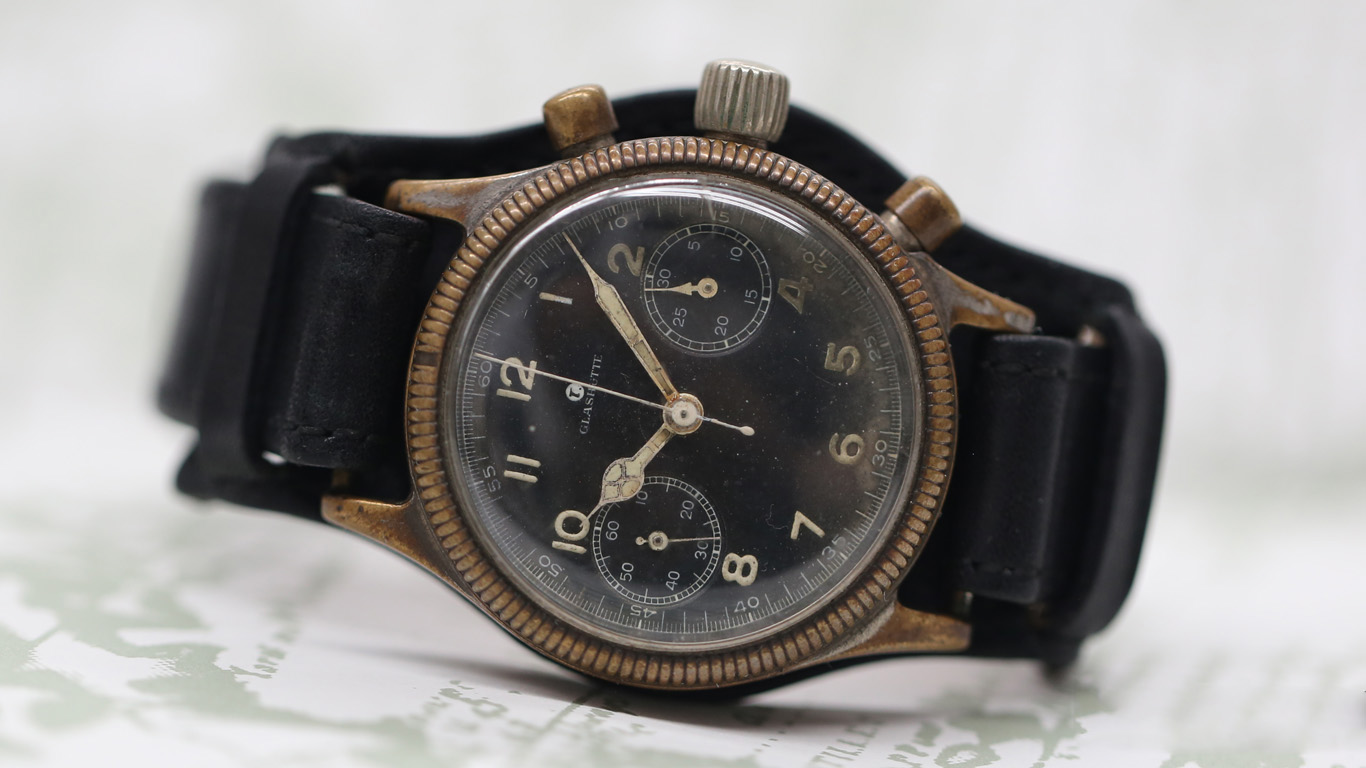
The first flyback chronograph to be produced in Germany, Tutima’s Flieger was fitted with calibre 59 with two pushers, a brass case with a coin-edged rotating bezel and a unique red reference marker, a black dial, luminous cathedral-style hands and an oversized crown. With only about 30,000 pieces released on the market, Tutima’s original Flieger Chronograph is highly sought-after by collectors. Like many German watch brands in Glashütte, Tutima’s installations were devastated during an air raid at the end of WWII and any operational machinery that survived was appropriated by the Russians.
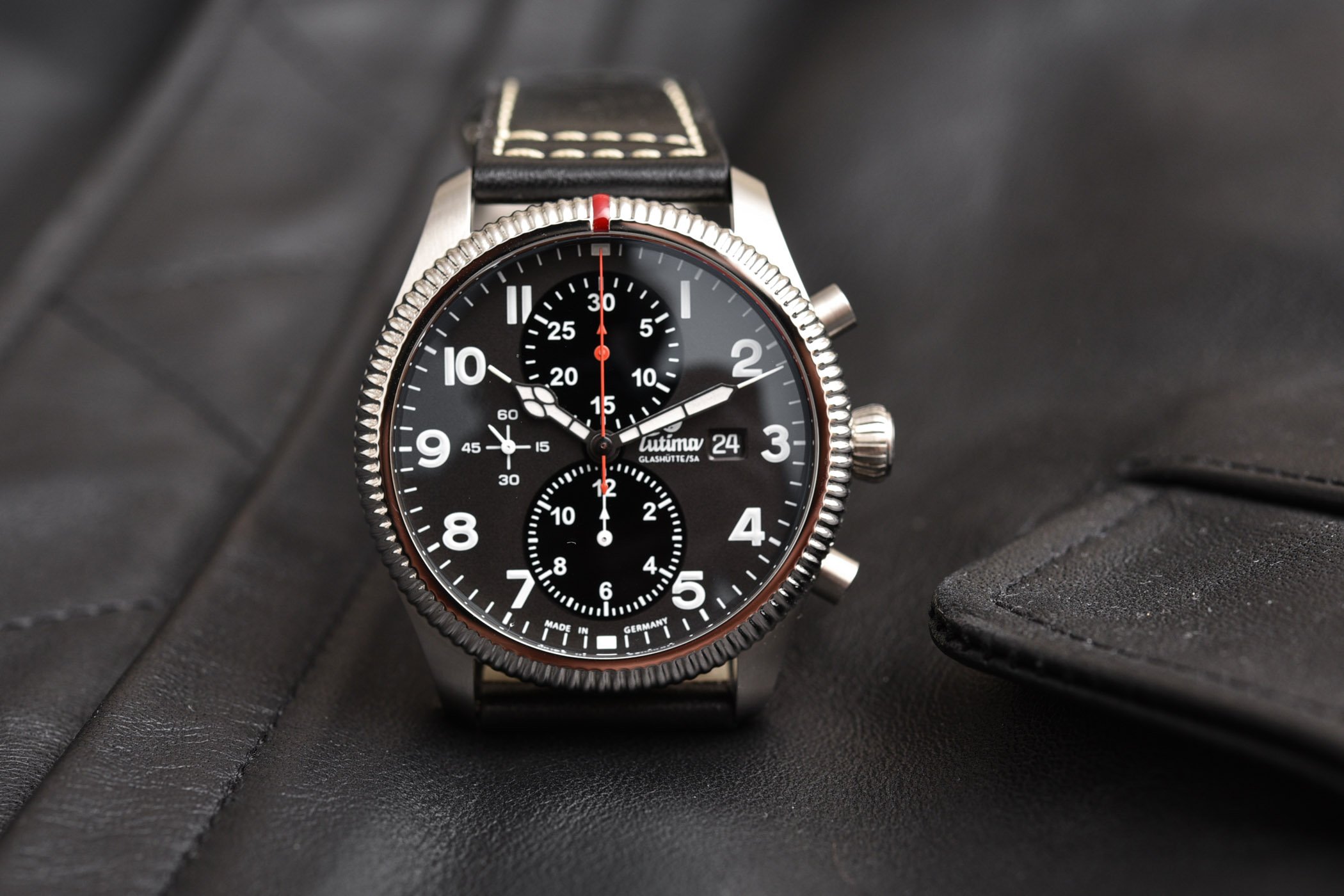
What’s similar, what isn’t?
In 2013 Tutima released the Grand Flieger Classic Chronograph. A more contemporary take on the original Flieger, the Grand Flieger Classic has many the traits of its ancestor with some design updates that bring it into the 21st century. The Flieger-style case references its ancestor with its iconic coin-edged rotating bezel and bright red reference marker to track elapsed times. Larger than the original Tutima watch, the Grand Flieger weighs in at 43mm with a case height of 16mm.
It is definitely a BIG watch, but many fans of pilot’s watches would argue that this is precisely the point; the famous B-Urhen watches, for example, produced for Germany’s Luftwaffe came with strapping 55mm cases. The charisma, in my eyes, of a pilot’s watch resides in its oversized dimensions and stark tool-oriented styling.
Featuring a mix of polished and satin-brushed finishes, the stainless steel case has a reassuring solidity and the notches on the bezel are extremely inviting to the touch. The two piston pushers hark back to the original but the onion crown is more tapered and stylised because not a lot of men are going to be manipulating the crown with bulky gloves. The dial side is protected with a domed sapphire crystal with anti-reflective treatment on both sides and the caseback reveals the movement through a sapphire crystal.
If you look at the left side of the case, you will spot the word Chronometer etched into the metal, because the movement, which we will cover shortly, has attained Germany’s equivalent of the COSC-chronometer certification. With its screw-down crown and caseback, the watch has a robust water-resistance of 200 metres.
Legibility is paramount
As you would expect from a pilot’s watch, the dial accentuates legibility with bold contrasts in black, white and a dash of red. The matte black background features large Arabic numerals and classic cathedral-style hands which are slightly shorter than the original – all treated with lume that glows green in the dark. The most obvious difference with the original is the layout of the two chronograph sub-dials, in this case vertically aligned and enlarged.
The 30-minute counter at 12 o’clock (with a small red hand) and the 12-hour counter at 6 o’clock stand out from the matte background with a darker, glossier shade of black and actually invade the surrounding numerals for a more contemporary look. What is interesting to note is the elimination of the numerals on the 60-second chapter ring, no doubt a design choice to keep the dial as uncluttered as possible.
The chronograph seconds hand is picked out in red and stands out clearly against the white markers. Another clever design choice is the hyper-discreet running seconds indicator placed at 9 o’clock and we have to admit that even the date window is fairly well camouflaged against a dark background.
A Valjoux 7750 movement, with Chronometer status
Underneath the 43mm case is a modified Valjoux 7750 automatic movement (Calibre Tutima 320) with a cam-actuated chronograph with a 44-hour power reserve. Tutima has customised the rotor with a golden seal and, the good news is that it has obtained Chronometer status for the movement from Germany’s equivalent of the COSC. Similar to the COSC but more stringent in some regards, Germany’s DIN 8319 15-day tests are performed on assembled timepieces.
Thoughts
A convincingly executed revival piece – to avoid using the word vintage – Tutima’s Grand Flieger Classic Chronograph satisfies our nostalgia for WWII aviation chronographs and doubles up as a solid companion for everyday wear and tear. With its 200m water-resistance and chronometer-certified automatic movement, this is a fearless all-terrain vehicle. Concessions to modernity in the form of the vertical sub-dials and top quality finishes bring the watch firmly into our century. The only qualm we have regards the price, which is on the steep side for a watch with a modified Valjoux movement.
Price
The Grand Flieger Classic Chronograph (Ref. 6402-01) comes on a handsome aviator’s leather strap with white stitching and a folding clasp and retails for EUR 3,900. More details on tutima.com.

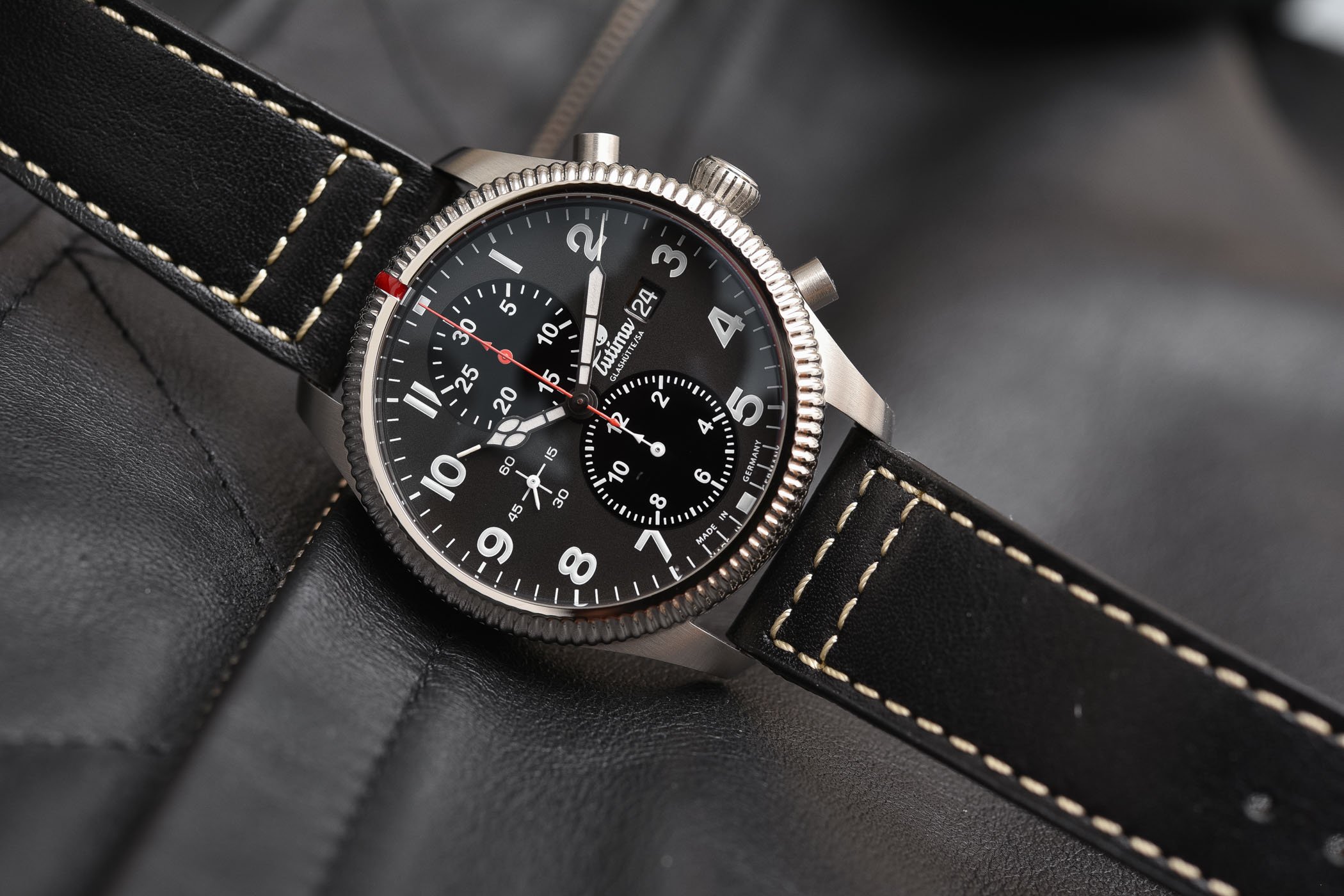
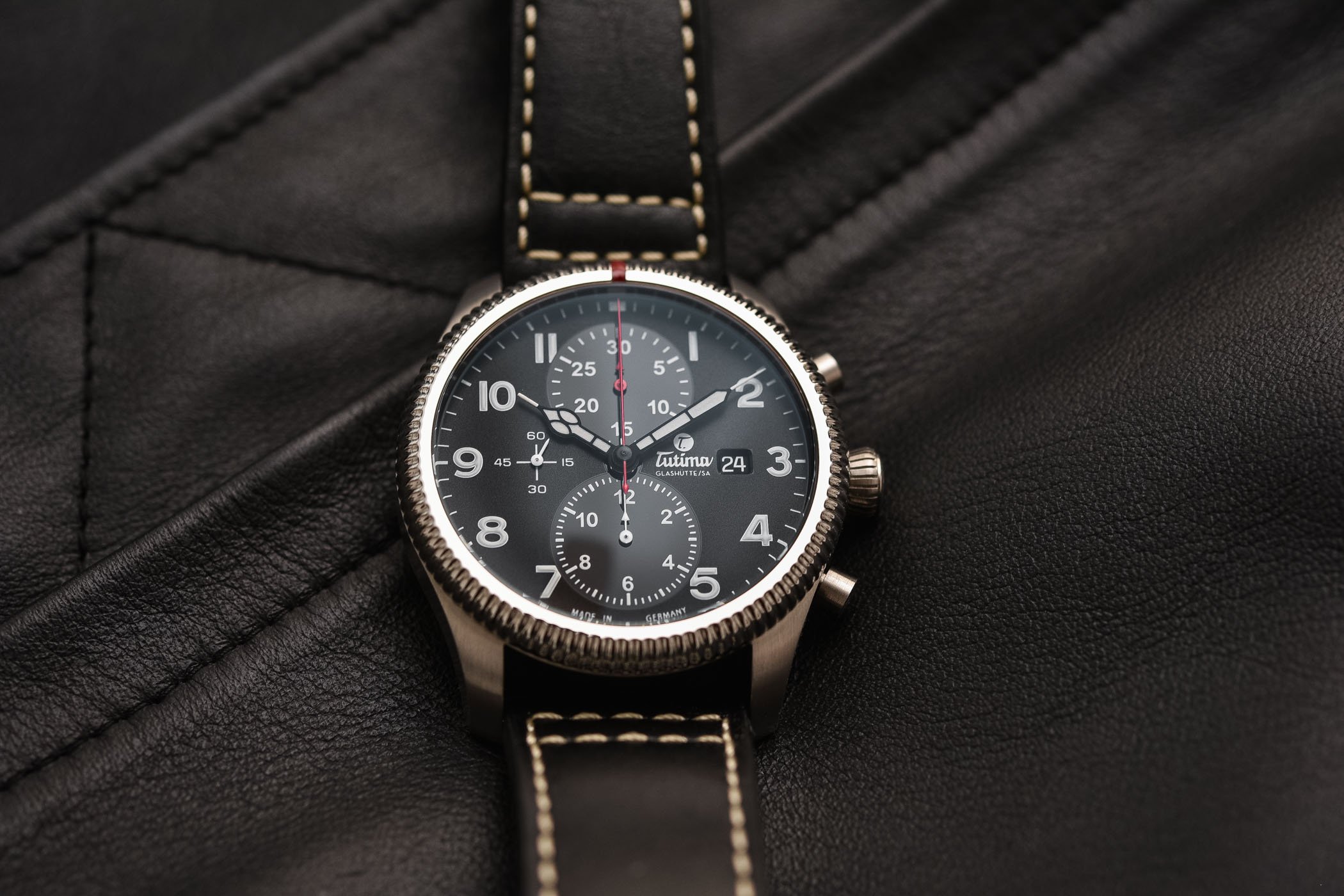
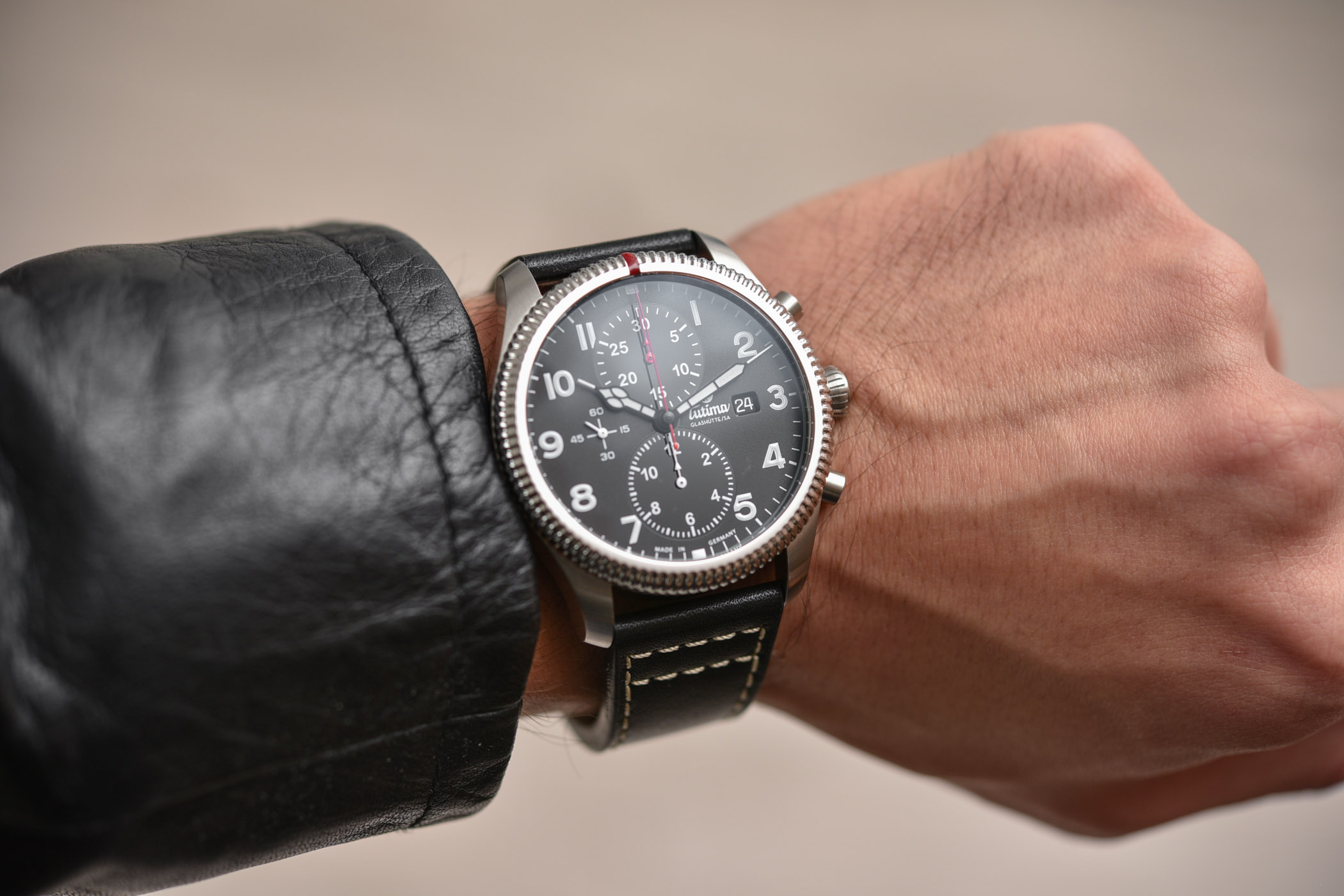
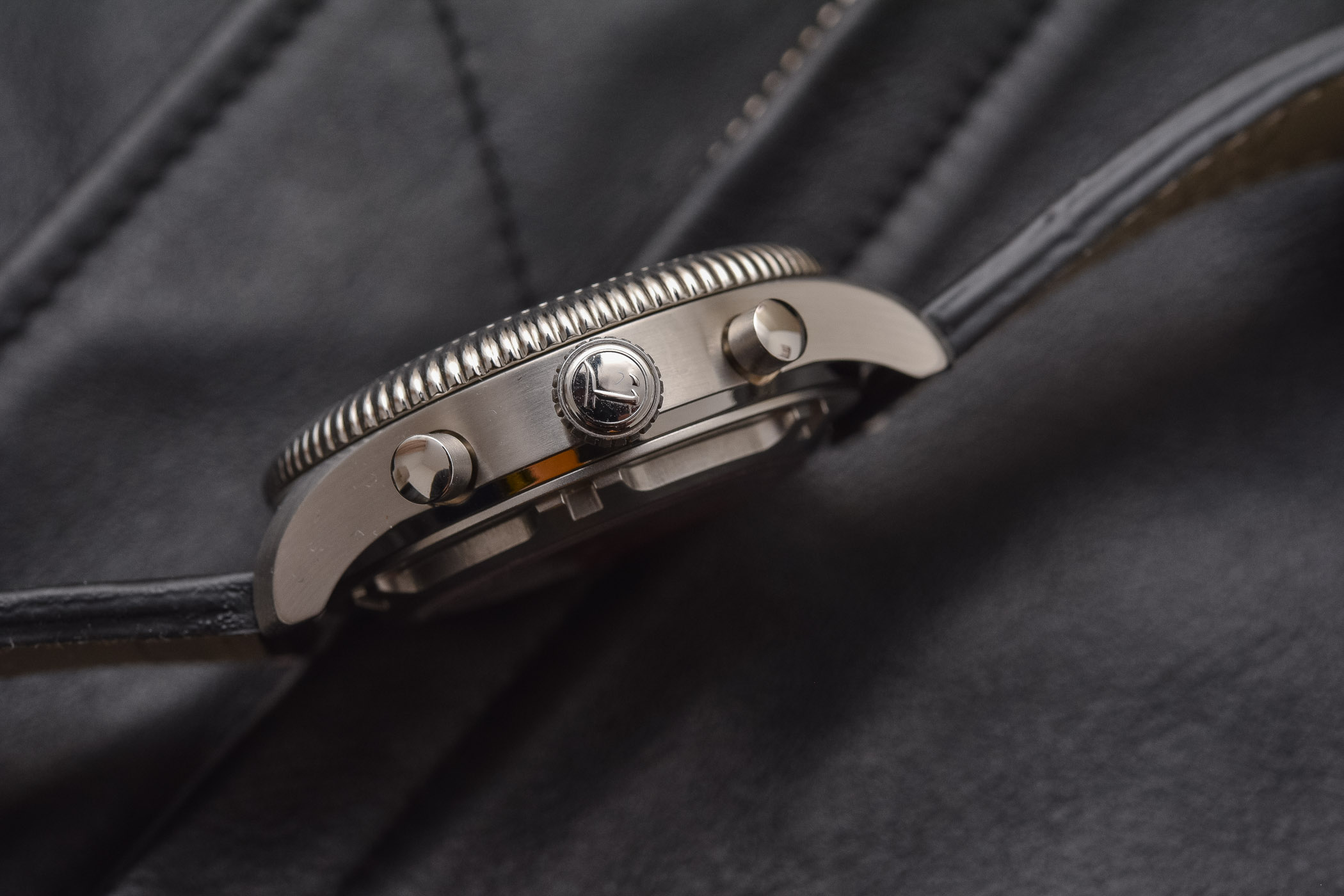
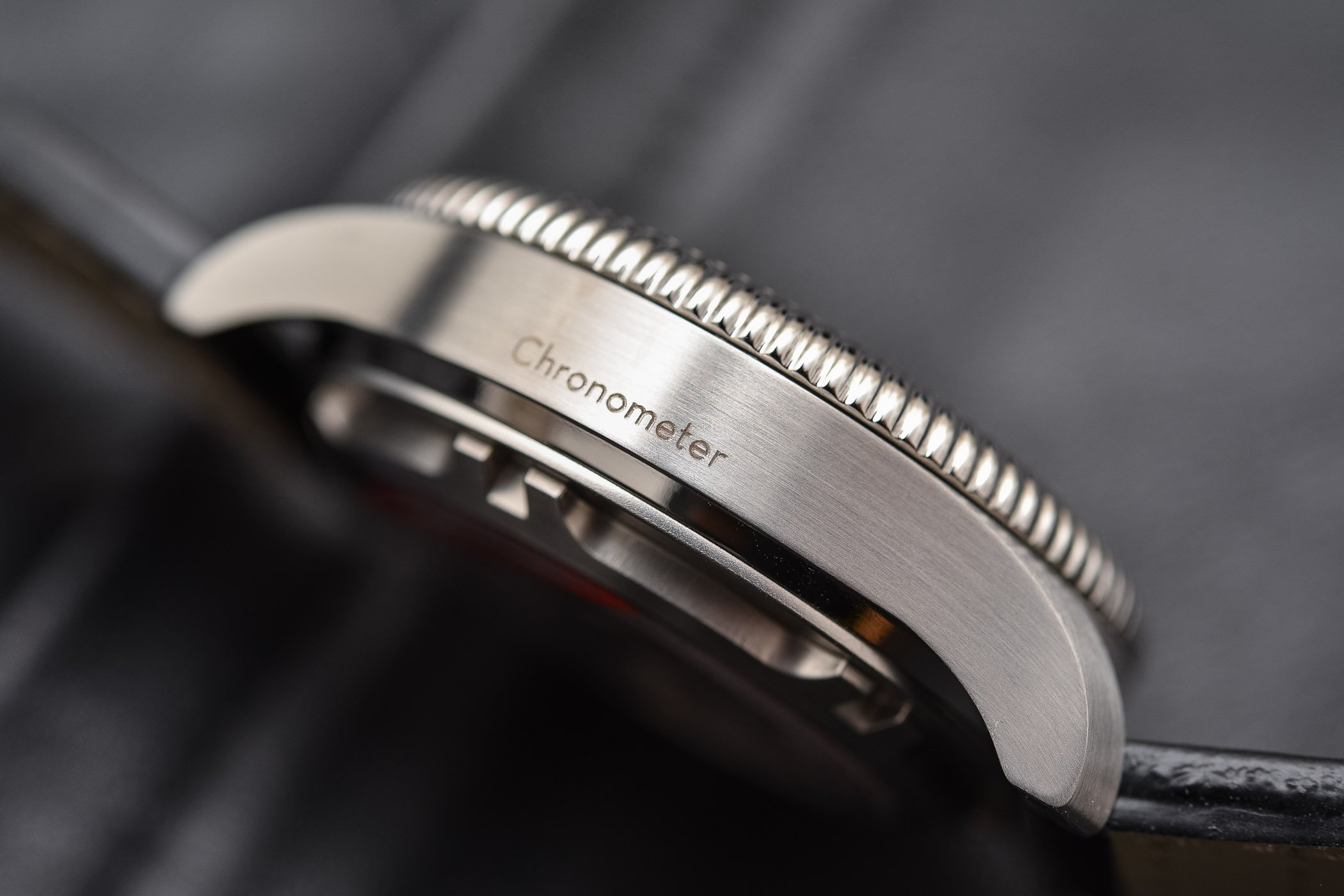
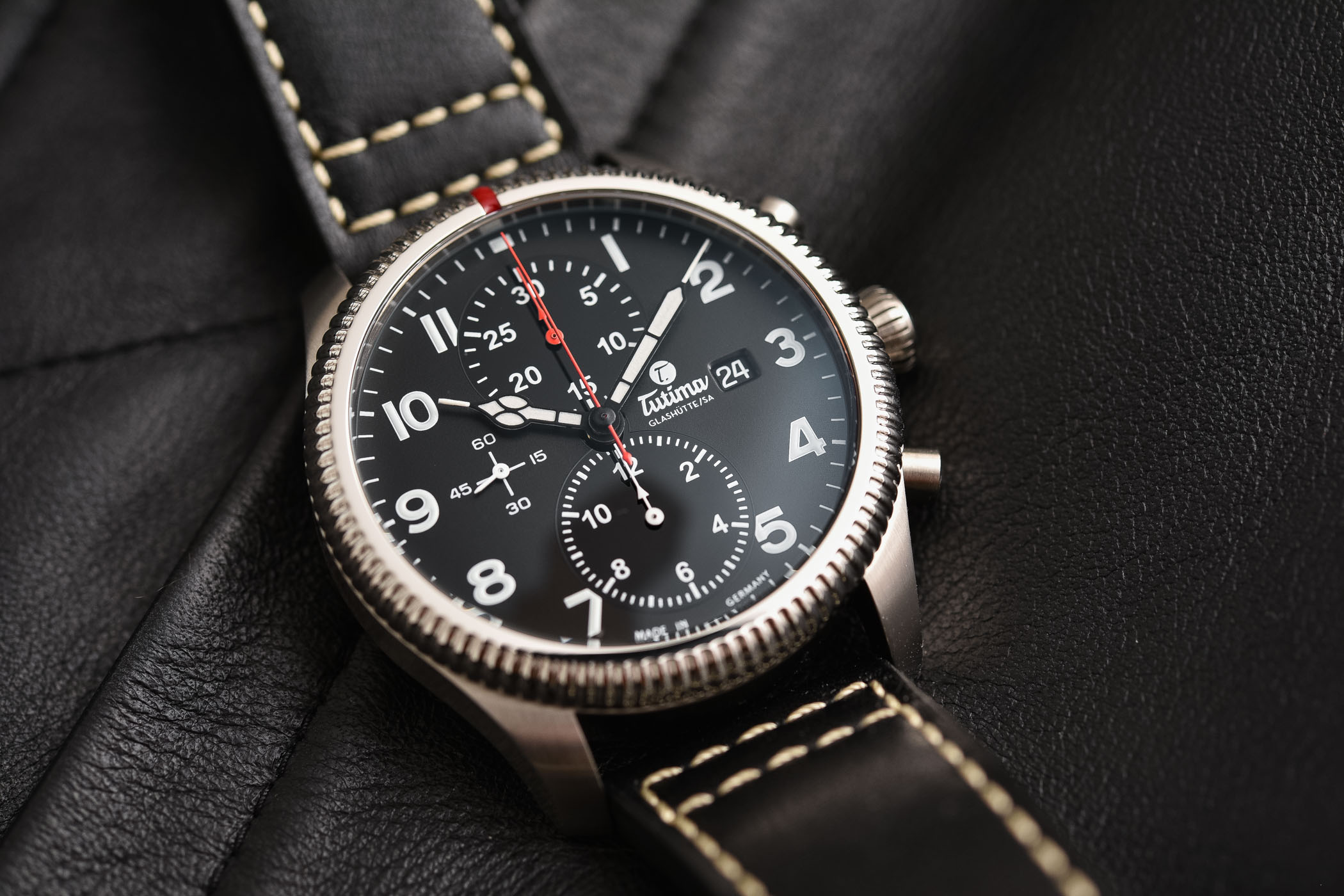
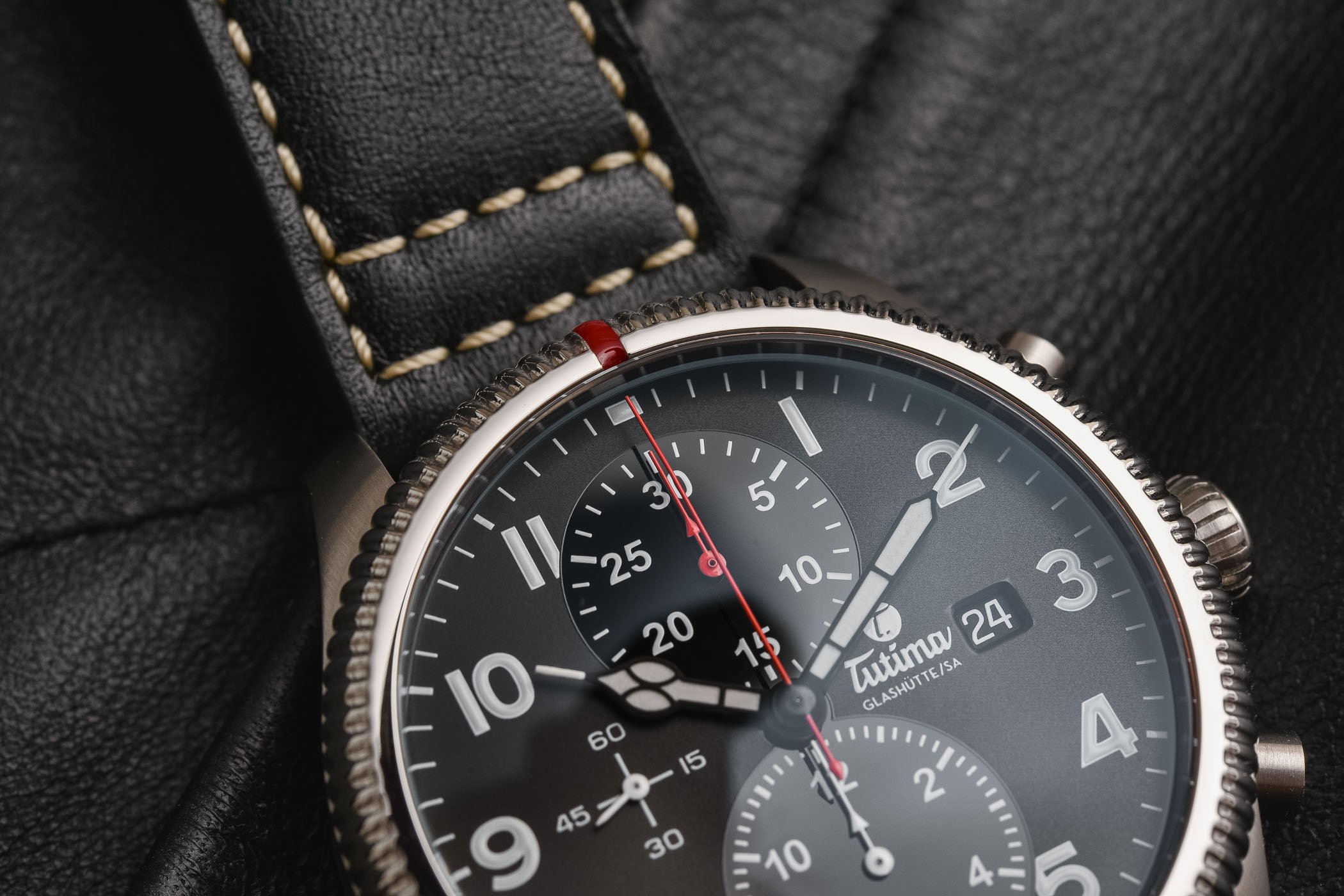
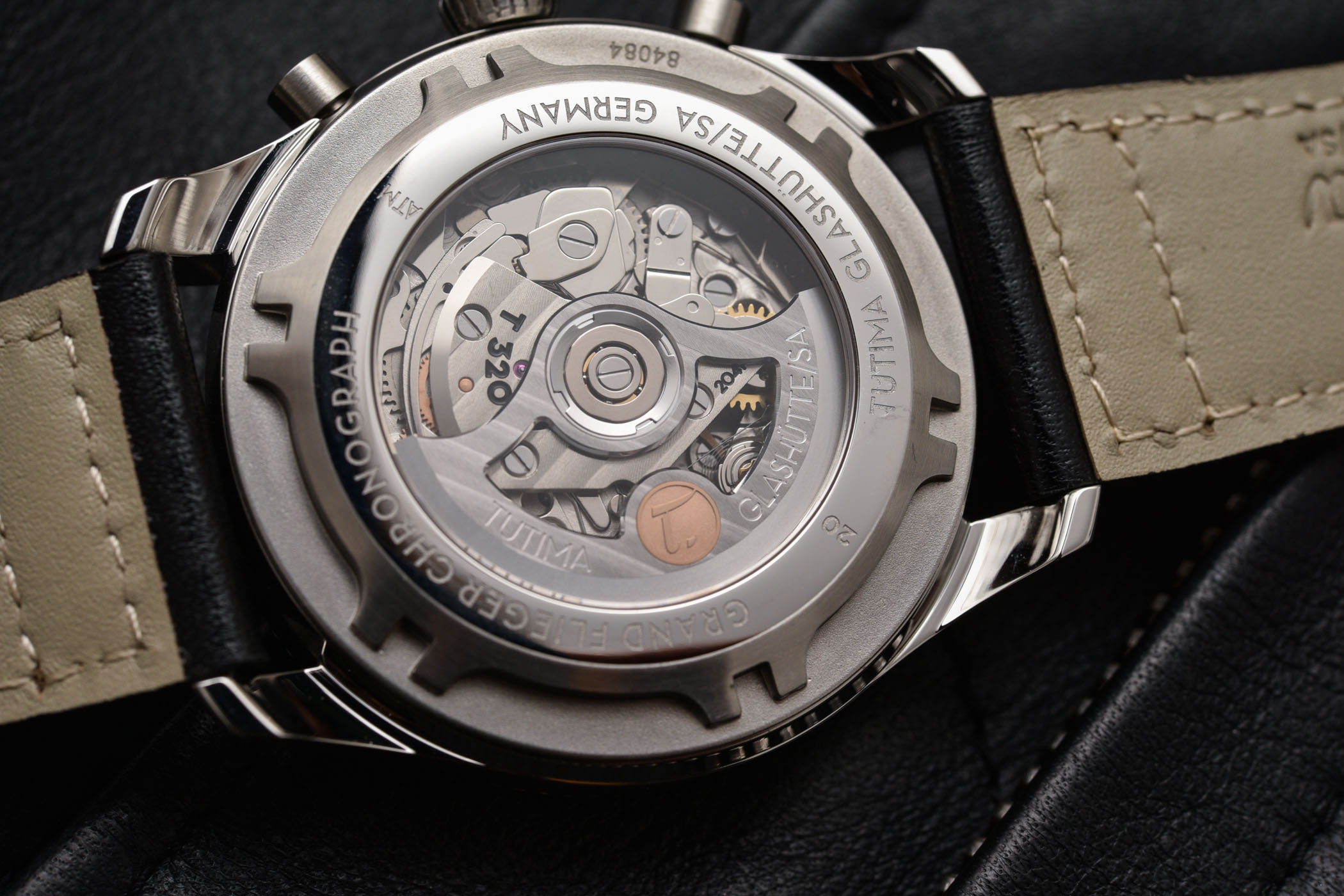
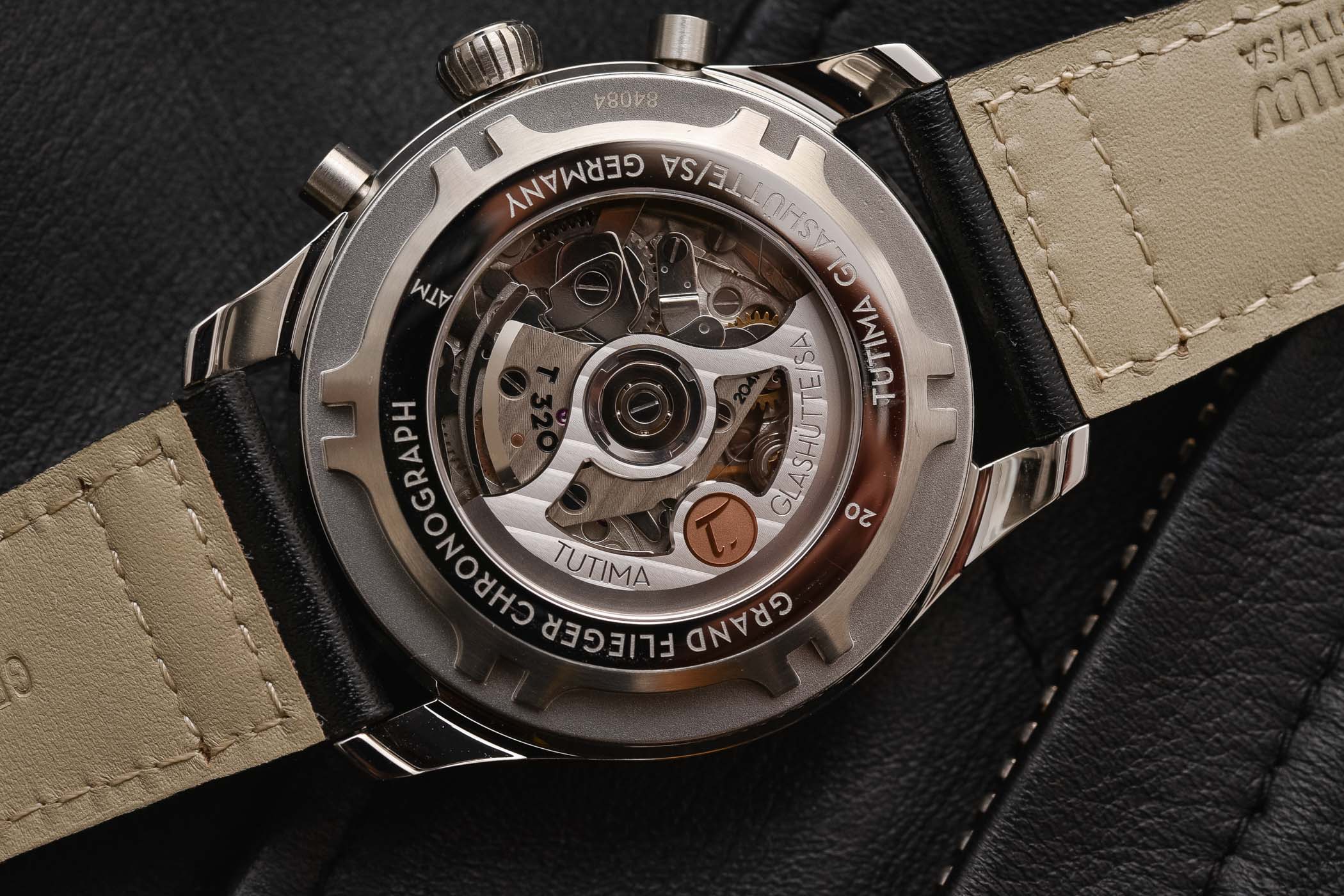
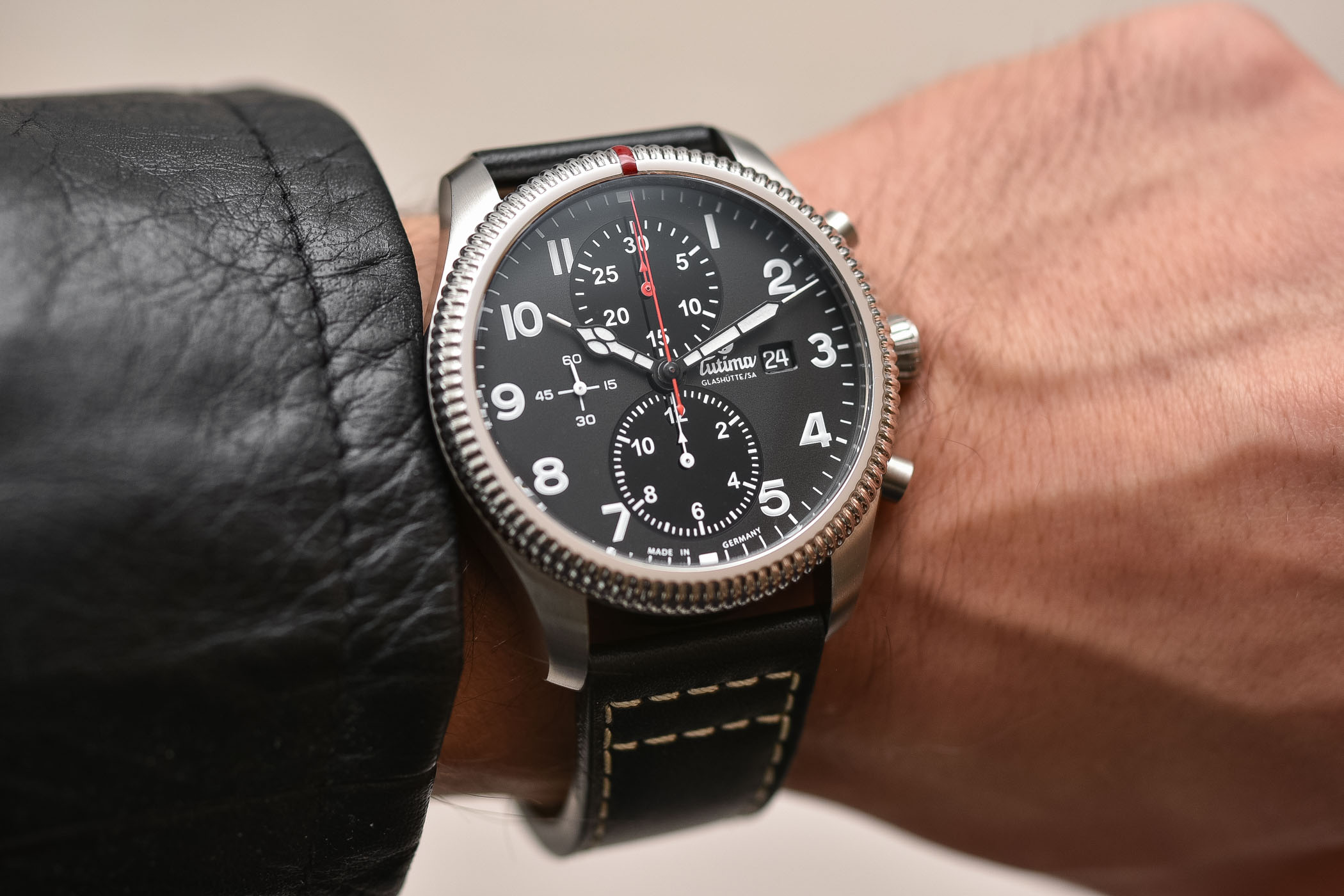



5 responses
A nicely executed classic.
hmmm…what do we have here…very similar to the IWC pilot’s chronograph…actually the same watch as it is powered by the same 7750….small difference though, the Tutima actually looks better…and 1’500 less….it also has its own flying history….I’ll stay with the Tutima…
Nice competition for Hanhart.
In terms of styling and size, I probably would prefer the Guinand Duograph variants, though those don’t (afaik) come with DIN 8319 certification. This is still a very handsome piece though.
Satisfied owner of TUTIMA GRAND CLASSIC HAVANA since 2008.